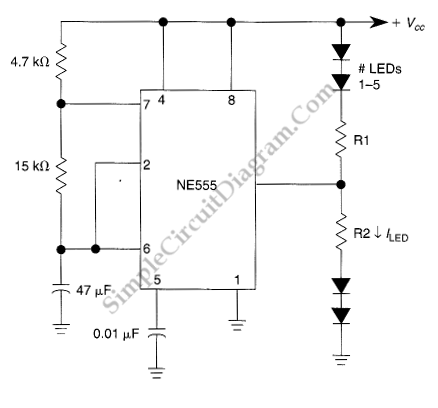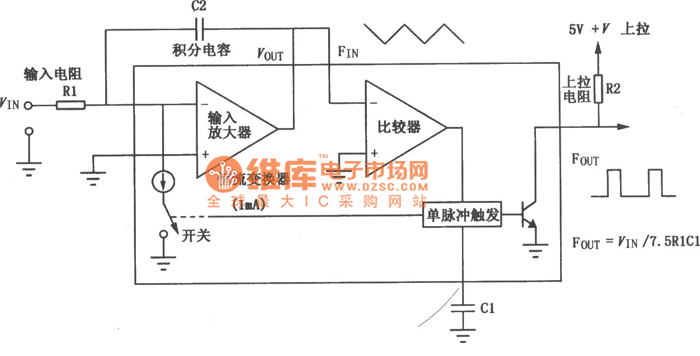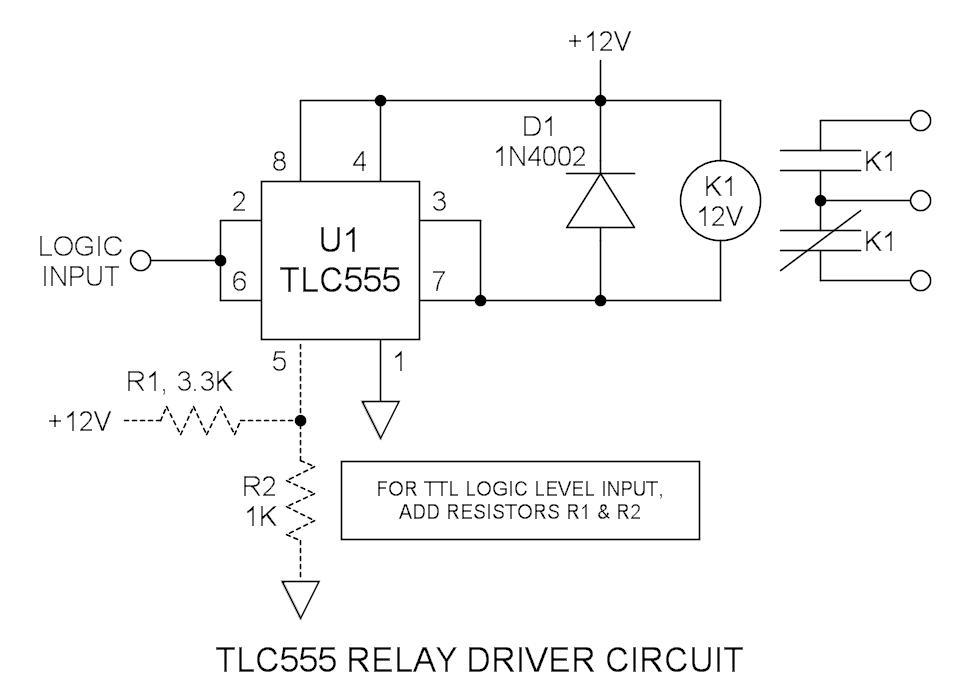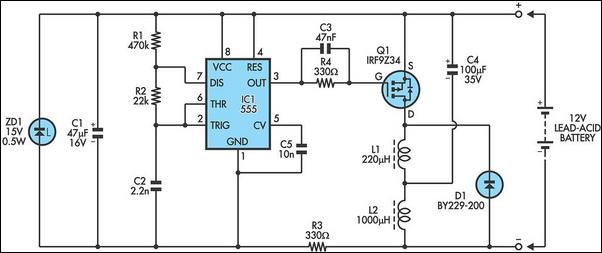
Voltage-To-Frequency Converter (VFC) with 555 IC
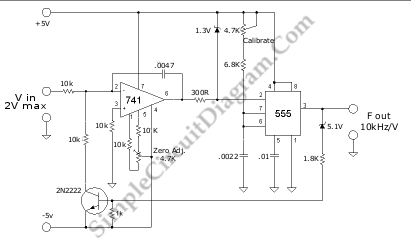
A voltage-to-frequency converter (VFC) circuit is illustrated in the schematic diagram below. The circuit utilizes a 555 integrated circuit (IC) as the central component of its operation.
The voltage-to-frequency converter (VFC) is a crucial electronic circuit that converts an input voltage signal into a corresponding frequency output. This conversion process is particularly useful in various applications such as analog-to-digital conversion, signal processing, and frequency modulation.
In this circuit, the 555 timer IC operates in astable mode to generate a square wave output whose frequency is directly proportional to the input voltage. The configuration typically involves resistors and capacitors connected to the 555 timer, which determine the timing intervals and thus the frequency of the output signal.
The input voltage is applied to a control pin of the 555 timer, which adjusts the duty cycle of the output waveform based on the voltage level. The output frequency can be calculated using the formula derived from the 555 timer's timing characteristics, which incorporates the values of the resistors and capacitors in the circuit.
To ensure accurate operation, it is important to select appropriate resistor and capacitor values that suit the desired frequency range and input voltage levels. Additionally, bypass capacitors may be included to stabilize the power supply and reduce noise, enhancing the performance of the circuit.
Overall, the VFC circuit provides a reliable means of translating voltage levels into frequency signals, facilitating further processing or measurement in various electronic systems.Voltage-to-frequency converter (VFC) circuit is shown in the schematic diagram below. The circuit employs 555 IC as the core of its function. This circuit.. 🔗 External reference
The voltage-to-frequency converter (VFC) is a crucial electronic circuit that converts an input voltage signal into a corresponding frequency output. This conversion process is particularly useful in various applications such as analog-to-digital conversion, signal processing, and frequency modulation.
In this circuit, the 555 timer IC operates in astable mode to generate a square wave output whose frequency is directly proportional to the input voltage. The configuration typically involves resistors and capacitors connected to the 555 timer, which determine the timing intervals and thus the frequency of the output signal.
The input voltage is applied to a control pin of the 555 timer, which adjusts the duty cycle of the output waveform based on the voltage level. The output frequency can be calculated using the formula derived from the 555 timer's timing characteristics, which incorporates the values of the resistors and capacitors in the circuit.
To ensure accurate operation, it is important to select appropriate resistor and capacitor values that suit the desired frequency range and input voltage levels. Additionally, bypass capacitors may be included to stabilize the power supply and reduce noise, enhancing the performance of the circuit.
Overall, the VFC circuit provides a reliable means of translating voltage levels into frequency signals, facilitating further processing or measurement in various electronic systems.Voltage-to-frequency converter (VFC) circuit is shown in the schematic diagram below. The circuit employs 555 IC as the core of its function. This circuit.. 🔗 External reference
